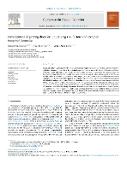Development of gaming disorder: Underlying risk factors and complex temporal dynamics

Datum vydání
2024Publikováno v
Computers in Human BehaviorRočník / Číslo vydání
153 (Neuveden)ISBN / ISSN
ISSN: 0747-5632Metadata
Zobrazit celý záznamKolekce
Tato publikace má vydavatelskou verzi s DOI 10.1016/j.chb.2023.108112
Abstrakt
Empirical studies on gaming disorder (GD) predominantly employ cross-sectional designs, offering limited insights into the development of GD. The existing longitudinal studies on the risk factors of GD often yield contradictory results and typically rely solely on baseline data to predict future states. The present study was specifically designed to describe and link developmental changes in risk factors and symptoms of GD. We surveyed a sample of intensively playing digital game players (N = 1301) across three data collection waves over a span of six months. The survey incorporated four different GD operationalizations and considered 13 previously identified risk and protective factors. We found that (1) trends in individual levels of stress, internet addiction, ADHD, and aggression/hostility were associated with the development of GD. (2) Internet addiction, social media addiction, escape motive, and anxiety showed consistent baseline connections to GD trends. (3) Notably, no differences were observed among participants' latent classes with distinct GD trajectories in terms of gender, age, gaming time, or the proportion of multiplayer gameplay. (4) GD symptoms exhibited slight but consistent negative aggregate trends. Participants with higher baseline GD levels generally displayed smaller shifts over time, suggesting the temporal stability of high symptom levels.
Klíčová slova
Gaming disorder, Symptoms, Risk factor, Protective factor, Longitudinal, Development,
Trvalý odkaz
https://hdl.handle.net/20.500.14178/2271Licence
Licence pro užití plného textu výsledku: Creative Commons Uveďte původ 4.0 International






